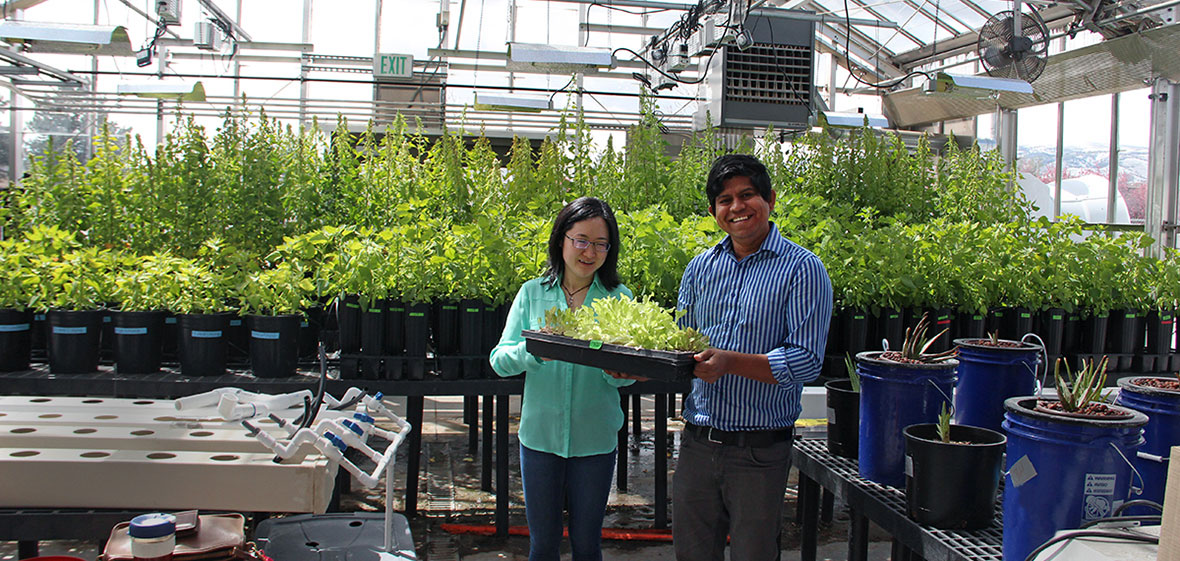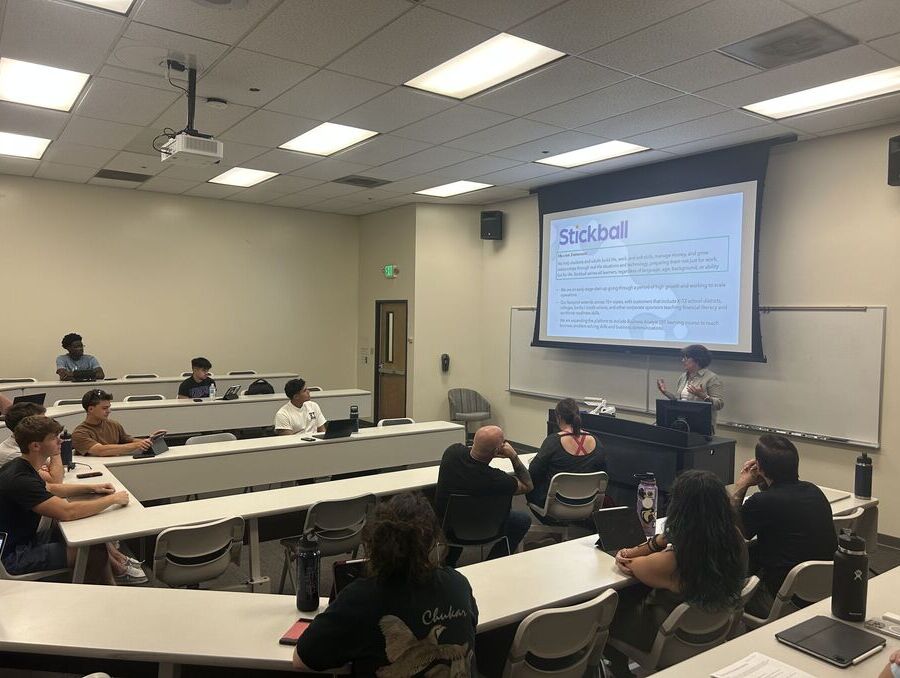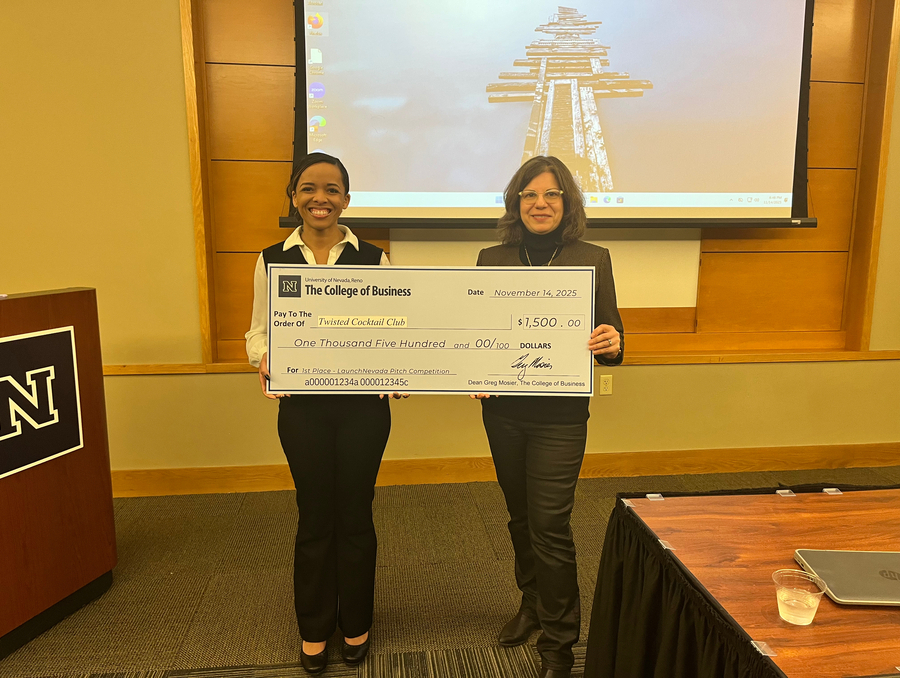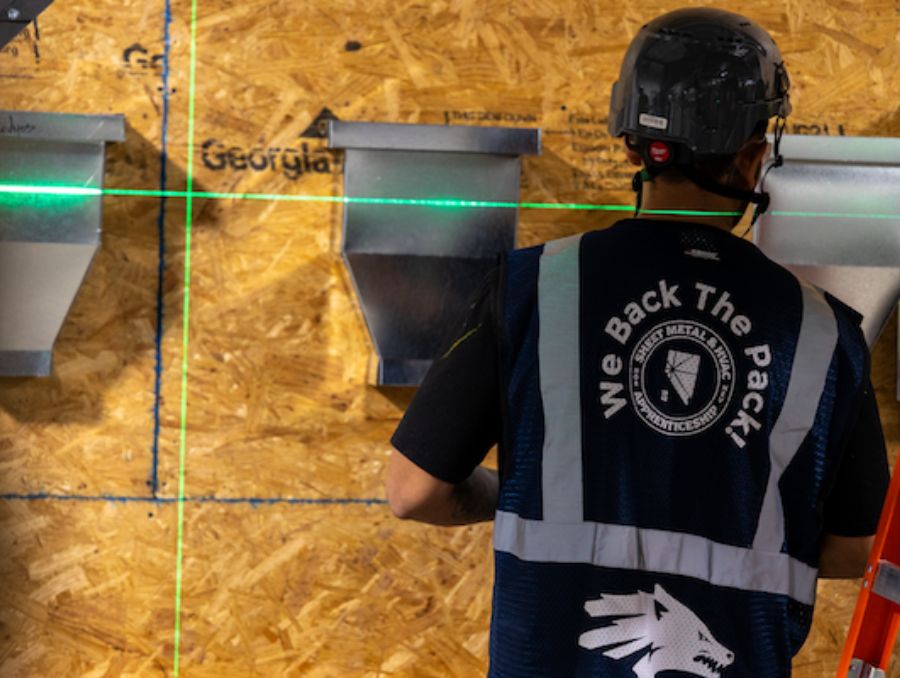A valuable new method for detecting and quantifying carbon nanotube residue in plants, for which the food safety is unclear, has been developed at the University of Nevada, Reno.
Agricultural application of nanomaterials, a thousand times smaller than human hair, can potentially increase food yield, fight diseases and deliver nutrition. Concerns have been raised about the release of carbon nanotubes into the environment and its subsequent uptake by agricultural plants in contaminated environments, which increases the risk of human exposure through the food chain.
"With the increasing production and use of carbon nanotubes in a number of applications and their inevitable release during the life-cycle of nanotube-based products, these engineered nanomaterials are likely to accumulate in the environment in places such as wastewater and biosolids, sediments and biosolids-amended soils," Frank Yang, assistant professor of civil and environmental engineering at the University, said.
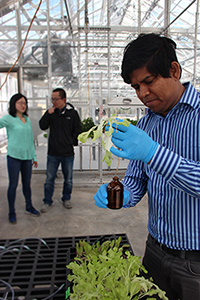
Graduate student Kamol Das prepares lettuce for carbon nanotube testing using hydroponic methods.
Techniques for detecting the nanotube material in biological samples are limited though, making it difficult to study the environmental fate of and human exposure to carbon nanotube materials.
"Detection and quantification of carbon nanotubes in plant tissues is quite challenging," Frank Yang, assistant professor of civil and environmental engineering, said. "While the environmental safety of nanomaterial application still requires careful evaluation, to manage the application, information for the concentration of nanomaterial is obviously critical. To address this challenge, we developed an analytical approach, incorporating optimized plant material digestion with Raman spectroscopic analysis of the nanotubes."
Hundreds of Tests
Raman analysis for carbon nanotubes in solution is not new. However, to apply it for complex plant tissues is demanding. After hundreds of trials and tests, Yang's graduate student Kamol Das found they can remove the background materials by treating plant tissues with acids under high temperature (digestion), but keep multi-walled carbon nanotube material intact for Raman analysis. The developed approach was then applied to study their uptake by lettuce under hydroponic growing conditions.
Das, a doctoral candidate in the Department of Civil and Environmental Engineering, began tackling this problem when he started his Ph.D. project in 2016.
Five digestion reagents, including sulfuric acid, hydrochloric acid, nitric acid, ammonium hydroxide, and hydrogen peroxide, were examined in their experiments. Nitric acid showed the best performance, removing 98 to 99 percent of the leaf/stem/root biomass and minimizing background signals that can interfere with the Raman spectrograph signals.
Detecting Nanotubes in Food Crops
"Our results demonstrated that nitric acid digestion in conjunction with Raman analysis is an effective approach for detecting MWCNTs (multi-walled carbon nanotubes) in food crops," Das said. "This contributes to the potential development of new analytical platforms for studying the environmental fate of carbon nanotubes in the soil-plant system and human exposure through the food chain."
This technique could also be useful to the development of new analytical platforms for studying the environmental fate of other carbonaceous nanomaterials such as graphene and graphene oxide in the soil-plant system as well as human exposure to those nanomaterials through the food chain, with broad implications on food safety and the sustainable development of nanotechnology.
In his experiments, Das has also quantified carbon nanotube material by using a thermal analysis method, which was primarily innovated by Judy Chow at Desert Research Institute. The thermal analysis method has been used for analyzing airborne particles for long time, and applied for carbon nanotube in animal tissues. This is the first time for Chow's method to be successfully used for carbon nanotube detection in plant tissues.
American Chemical Society Award
Based on the paper for quantification of carbon nanotubes, Das has received the 2018 C. Ellen Gonter Graduate Student Paper Award from the American Chemical Society Environmental Chemistry Division. He is one of only six students from the United States and other countries to receive this award. This is the highest recognition given to students by the Division of Environmental Chemistry. Das has been invited by the Division of Environmental Chemistry to present his work in the special Gonter symposium in ACS Fall Meeting in Boston.
Yang, Das's advisor in the College of Engineering, is proud of this outcome, as "this is the highest award given to students by the ACS Environmental Chemistry Division. Many previous awardees are current established professors at prestigious institutes, including MIT, UC Berkeley, and Virginia Tech. It is really a profound list to be included."
A scientific paper about their work on Raman analysis of carbon nanotubes has been published in the journal of Environmental Science: Nano, as a cover feature. Das has also been invited to give a talk in Gordon Research Seminar for Nanoscale Science, which is another great honor for graduate students. Yaqi You, a previous postdoc in Yang's group, is a co-corresponding author for the paper. For the quantification work, Das collaborated with Chow and Xiaoliang Wang at the Desert Research Institute and Baoshan Xing at the University of Massachusetts
